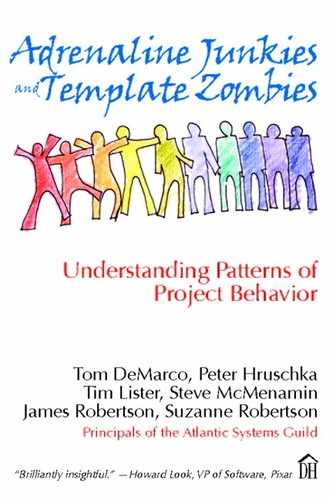30. Short Pencil
,
Successive waves of cost reduction begin to interfere with the organization’s ability to get work done.
Sure, cost containment is important, even essential. It’s vital that your organization has as little burden of overhead as those it competes with. Given all that, there is still something terribly wrong when you start to hear team members make comments like this:
“I hate working for a company that makes you turn in a short pencil before you can get a long one.”
The most dedicated cost-reduction advocate would probably admit that such programs can be carried too far. It’s perfectly obvious that too much cost reduction could make an organization less able to compete, and eventually even begin to drive costs up. It’s perfectly obvious, but let’s take a moment anyway to examine a list of the ways that cost reduction beyond a certain level can hurt you:
• Firing people and allocating their work among their remaining peers may eventually cause those peers to leave and thus necessitate the hiring of expensive new people, all at the bottom of their learning curves, to do the work.
• Overloaded people may begin to burn out, take sick time, introduce defects into the work, and breed discontent.
• High-priced professional workers may spend increasing amounts of their time doing the clerical tasks that had previously been done for them by lower-paid workers (those now trimmed in the interests of efficiency).
• First-level workers may be relatively directionless because the managers who used to look out for them are gone.
• People whose peers have been fired may be just annoyed enough to desert the organization that fired their colleagues. (And they won’t time their departures to facilitate the needs of the organization they’re leaving.)
• Loyalty, energy, innovation, morale, and dedication may decline while absenteeism, schedule slip, and shoddy work increase.
As you look over this catalog of horrors, consider that each and every effect is accompanied by no-kidding, real cost savings. The company that begins to experience all or most of these gone-too-far symptoms is probably having a terrific quarter, due directly to the attendant cost savings. Income hasn’t been much affected yet, and every dollar of revenue is offset by a smaller amount of cost—so net profits look great. But the organization is eating its seed corn.
A single cost-reduction program may very well be sensible. But if your company is now entering its second or even third cost-reduction wave, it may be time to stop thinking about what you can do to help the company cut more costs and start thinking instead about your own well-being. As the long-term effects take hold and revenue declines, a clamor will arise for even more cost reduction, to protect profits. You may be able to hold onto your job in spite of the company’s declining fortunes, but it’s certainly not going to be much fun.
“We need to distinguish between cost reduction and organizational bulimia.”
—Ken Orr
